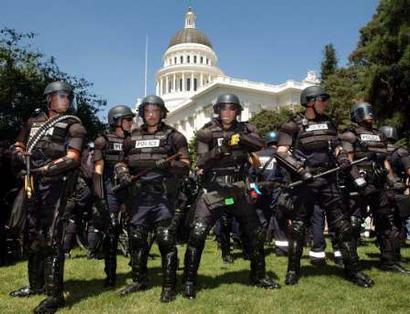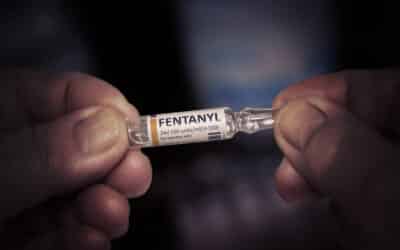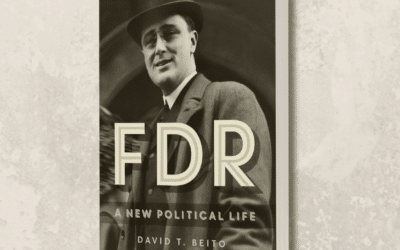Through the proliferation of joint law enforcement task forces, the federal government is creating a national police force that operates in a legal twilight zone with little or no oversight.
Law enforcement officers from various state, local and federal law enforcement agencies make up these joint task forces. The concept evolved out of the unconstitutional “War on Drugs” launched by President Richard Nixon. The first multi-jurisdictional task forces were put together in the 1970s.
Dan Baum chronicled the evolution of these multi-jurisdictional police forces in his book, Smoke and Mirrors: The War on Drugs and the Politics of Failure. Radley Balko summarized Baum’s description of the origins of these task forces in a Washington Post article writing, “Nixon wanted ‘strike forces’ that could kick down doors and put the fear of God into drug offenders without burdensome hurdles like the Fourth Amendment or the separation of powers.”
Initially, many local law enforcement agencies weren’t interested in getting in bed with federal cops and were wary of the aggressive tactics employed by the joint task forces. But the feds used federal grants and asset forfeiture money to bribe reticent departments and incentivize participation. The number of joint task forces grew exponentially in the 1980s and 1990s. The deployment of these task forces also expended beyond the “war on drugs.”
Today, you will find hundreds of joint state-federal task forces across the U.S. Just consider this list of task forces in the Pittsburgh area alone.
- Anti-Terrorism Advisory Council (ATAC)
- Crimes Against Children Task Force
- FBI Opioid Task Force
- Greater Pittsburgh Safe Streets Task Force
- J-CODE (Joint Criminal Opioid DarkNet Enforcement Team)
- Opioid Fraud and Abuse Detection Unit
- Pittsburgh Financial Crimes and Electronics Task Force
- Western Pennsylvania Fugitive Task Force
- Western Pennsylvania Violent Crimes Task Force
As of 2016, the DEA oversaw or participated in 271 anti-drug task forces across the U.S. Through a program called Project Safe Neighborhood, the Department of Justice ran another 86 taskforces as of 2018. The FBI administers 160 violent gang task forces.
The U.S. Marshalls run 60 Fugitive Task Forces. The ATF oversees the National Explosives Task Force and forms task forces for specific investigations. According to Balko, the U.S. Attorney General runs 18 task forces through the Organized Crime Drug Enforcement Task Force program. And then there are the countless temporary joint task forces created every year for special investigations and law enforcement initiatives.
Due to their nature, joint task forces operate in a legal twilight zone that gives them wide latitude. As Balko explained, they often go about their business with little or no oversight. Often, it’s impossible to identify any local officials overseeing their work. And even when somebody is technically in charge of the task force, they often give it free rein.
With little oversight, they have a record of overstepping and misdeeds, from excessive force to shootings, to mistaken raids, to straight-up corruption.”
This jurisdictional neverland also allows members of these task forces to escape accountability or punishment when they use excessive force, destroy property, or simply engage in sloppy police work. Balko’s article chronicles the story of a man who was beaten senseless after undercover members of a joint task force mistook him for a wanted individual. The state and federal law enforcement officers both dodged prosecution by playing ping-pong with state and federal jurisdictions. As Balko illustrates, In practice, joint task forces can “pick whichever laws — state or federal — afforded them the most power and the least accountability.”
Ironically, the Obama administration couldn’t even conduct a cost-benefit study on joint police task forces because records were almost nonexistent. According to those conducting the study, “Not only were data insufficient to estimate what task forces accomplished, data were inadequate to even tell what the task forces did as routine work.”
There are other pernicious consequences resulting from the rise of joint police task forces.
Local police can circumvent strict state asset forfeiture laws by claiming cases are federal in nature due to the participation in a joint task force. Under these arrangements, state officials simply hand cases over to a federal agency, participate in the case, and then receive up to 80 percent of the proceeds.
And the money and power that comes when local cops partner up with the feds incentives local police to focus on “national” priorities such as the war on drugs, federal gun control and “anti-terrorism” efforts instead of prioritizing more routine local policing such as murder, rape and property crime.
We also see the influence of these task forces in the state legislative process. Police lobbyists often oppose warrant requirements, limits on state and local cooperation with federal surveillance, prohibitions on the state enforcement of unconstitutional federal gun control, asset forfeiture reform, and other laws blocking state enforcement of unconstitutional federal laws because they don’t want to jeopardize “our federal partnerships.” In other words, their relationships with their “federal partners” trumps the Constitution.
The federal government was never intended to exercise “police powers” in the first place. The Constitution only defines four federal crimes – treason, piracies and felonies committed on the high Seas, counterfeiting, and crimes against the law of nations. The federal government also has criminal jurisdiction within Washington D.C. and its other enclaves.
The creation of every other federal crime violates the Constitution.
In other words, virtually the entire federal law enforcement apparatus is unconstitutional.
Nevertheless, the federal government is developing a national police force that operates outside of any jurisdictional, legal or constitutional boundaries. Joint task forces are a threat to liberty. States should simply withdraw.































